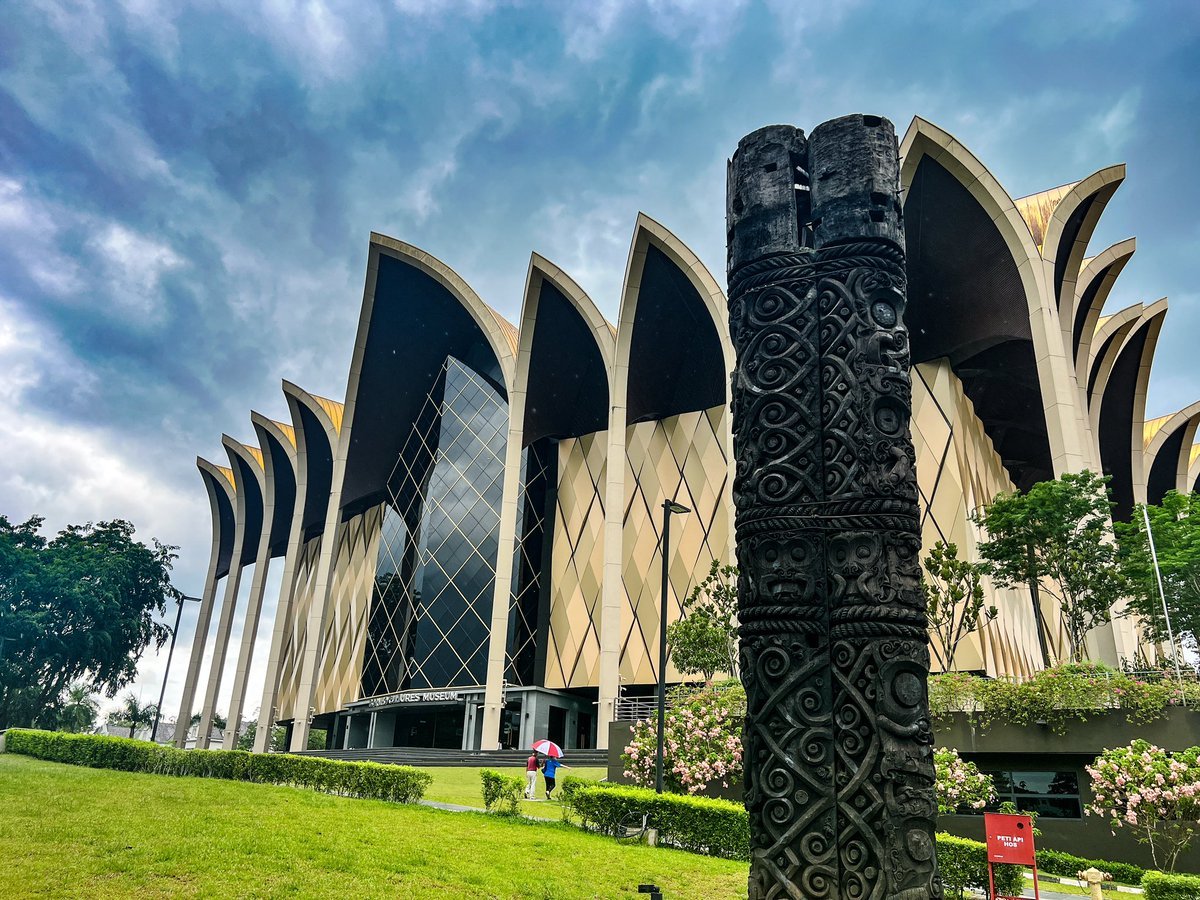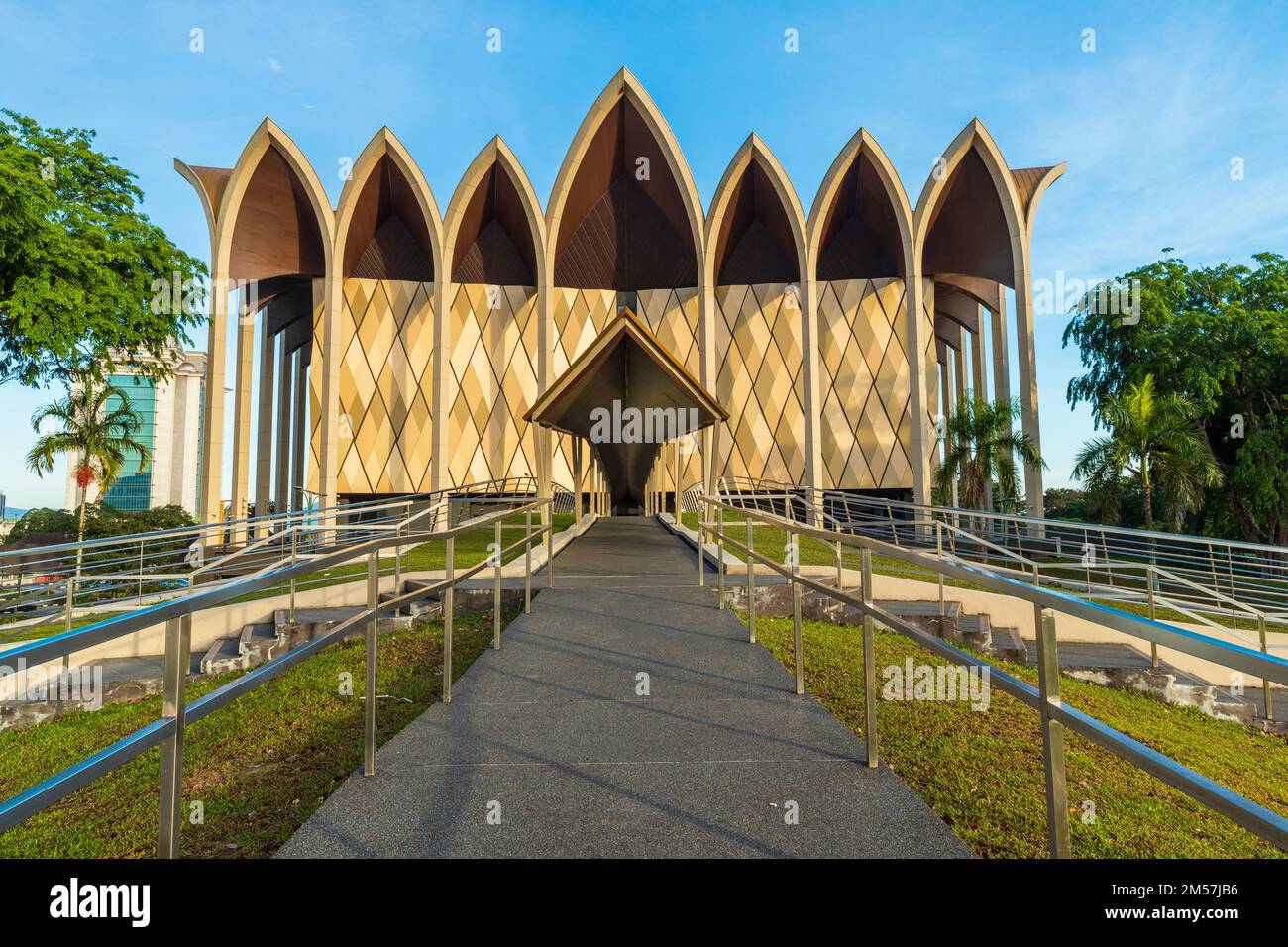Revealing the Treasures of Borneo Cultures Museum
Wiki Article
Delve Into the Remarkable World of Borneo's Cultural Heritage: A Comprehensive Overview to the Cultures Gallery Experience
Immersing oneself in the detailed tapestry of Borneo's cultural heritage belongs to starting a trip with time and tradition. The fusion of native tribes, standard handicrafts, captivating efficiencies, and historic stories housed within the boundaries of the island's museums offers a look right into a world including profound heritages and vivid customizeds. As site visitors traverse through these repositories of society, they are bid to check out a realm where past and present intermingle, welcoming reflection on the durability and richness of Borneo's varied heritage.Native Tribes of Borneo
Borneo is home to over 50 aboriginal people, each with one-of-a-kind cultural techniques and practices that have been maintained for generations. Amongst these people are the Iban, known for their typical longhouses and complex tattoos where several households stay. The Dayak individuals, another popular team, engage in fancy spiritual events and are competent craftsmens, crafting intricate wood carvings and woven textiles. The Penan tribe, on the other hand, are nomadic hunter-gatherers with a deep connection to the jungle, utilizing blowpipes for hunting and event wild plants for sustenance.These indigenous people play an essential role in keeping Borneo's abundant social tapestry. Visitors to Borneo have the chance to involve themselves in the unique way of lives of these people via cultural tours, homestays, and community-based tourism initiatives.
Traditional Handicrafts and Artifacts

One prominent instance of typical inventions in Borneo is the production of woven products - Borneo Cultures Museum. Experienced weavers utilize all-natural fibers like bamboo, rattan, and pandan entrusts to develop elaborate baskets, floor coverings, and accessories embellished with vivid patterns that hold symbolic definitions within the area
The art of woodcarving is an additional significant element of Borneo's traditional handicrafts. Craftsmens carve intricate designs into various kinds of timber to generate masks, sculptures, and music instruments that not just offer practical functions but also hold cultural value, usually portraying folklore or spiritual beliefs.
In Addition, Borneo is renowned for its beadwork, with craftsmens meticulously crafting beads from products like glass, seeds, and coverings to create jewelry, apparel decorations, and attractive things that showcase the region's vivid aesthetic customs. These typical inventions and artefacts not only serve as substantial expressions of Borneo's cultural heritage however also provide understandings right into the communities' ideas, values, and way of living.

Cultural Performances and Festivals
With an ingrained link to their social traditions, the areas in Borneo come alive through lively cultural performances and events that commemorate their heritage. These events showcase the abundant diversity of Borneo's ethnic groups, each offering unique dances, music, and routines that have been passed down with generations. Among one of the most renowned events is the Gawai Dayak, celebrated by the Dayak people to note the rice collecting period. During this festival, traditional songs fills up the air, elaborate dancings are carried out, and sophisticated standard costumes are put on. An additional significant event is the Pesta Kaamatan, celebrated by the Kadazandusun area to appreciate for the rice harvest. This festival includes social performances, including the Sumazau dance, and typical sporting activities like the bamboo dance. Site visitors to Borneo can submerse themselves in these festivities, getting a deeper understanding of the region's cultural heritage and experiencing the warm friendliness of its individuals. Cultural efficiencies and festivals work as a vivid reminder of Borneo's rich social tapestry and the importance of protecting these customs for future generations.Historic Stories and Artifacts
Exploring the historic stories and artifacts of Borneo offers a fascinating glance right into the region's abundant past and social development. Borneo's historical tapestry is woven with varied influences, reflecting the communications between indigenous people, Chinese traders, European colonizers, and Malay sultanates. The artifacts located in Borneo showcase this intricate background, ranging from traditional crafts like detailed beadwork and woodcarvings to archaeological treasures such as old pottery and devices.One of the most engaging facets of Borneo's historic stories is the conservation of oral practices gave through generations. These tales offer understandings into the ideas, custom-mades, and every day lives of Borneo's citizens throughout the centuries. The artifacts discovered from historical sites use tangible connections to these stories, allowing site visitors to witness the product culture of previous cultures firsthand.
Contemporary Cultural Conservation Efforts

Moreover, curricula and social exchange activities play an important role in elevating recognition regarding the importance of maintaining Borneo's special cultural heritage. By involving institutions, Borneo Cultures Museum museums, and the bigger neighborhood in discussions and tasks that celebrate Borneo's varied cultures, preservation efforts can gain energy and support for lasting sustainability. Partnerships in between governmental bodies, non-profit organizations, and local areas are vital in driving these conservation ventures forward, making sure that Borneo's rich social heritage remains lively and cherished for generations to find.
Conclusion
To conclude, the cultural heritage of Borneo is diverse and rich, with aboriginal tribes, standard inventions, social efficiencies, celebrations, historic narratives, and contemporary preservation efforts all contributing to its individuality and significance. Site visitors to Borneo's social museums can get a much deeper understanding and gratitude of the area's social heritage, enabling a much more immersive and informing experience.Submersing oneself in the elaborate tapestry of Borneo's social heritage is comparable to embarking on a voyage with time and practice.With a deep-rooted connection to their cultural traditions, the areas in Borneo come to life through dynamic cultural performances and celebrations that commemorate their heritage. Cultural performances and events offer as a vibrant tip of Borneo's abundant social tapestry and the importance of preserving these customs for future generations.
Additionally, instructional programs and social exchange tasks play an essential function in increasing understanding regarding the relevance of maintaining Borneo's one-of-a-kind social heritage. Collaborations between governmental bodies, charitable companies, and neighborhood communities are essential in driving these conservation endeavors forward, ensuring that Borneo's rich social heritage continues to be vivid and valued for generations to come.
Report this wiki page